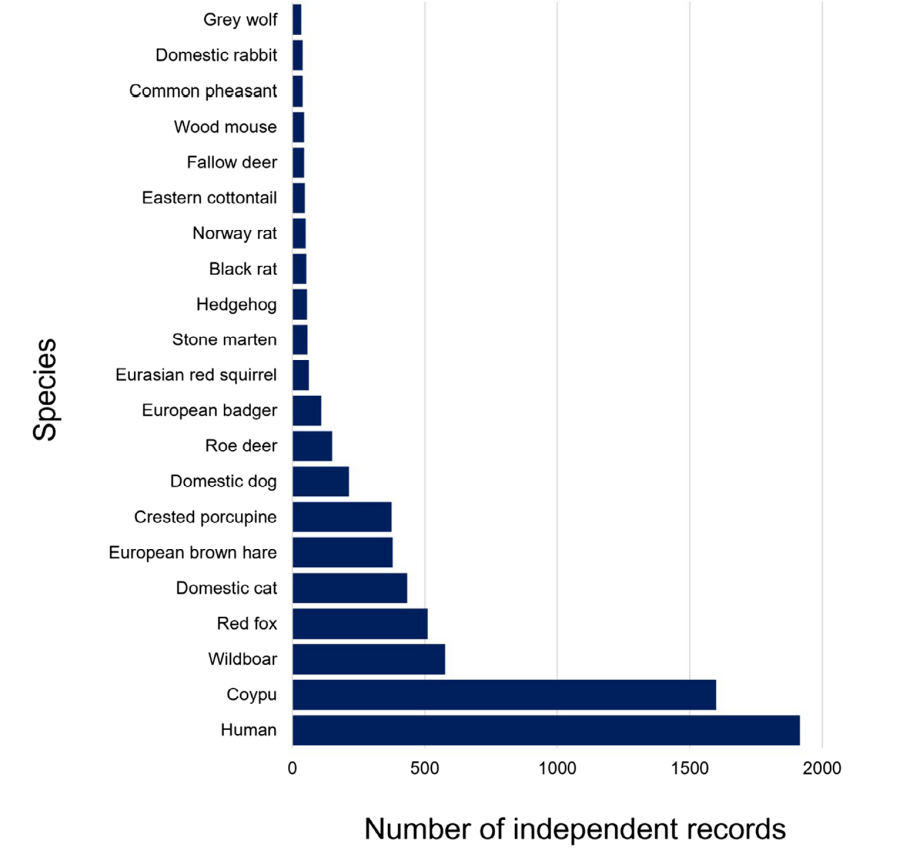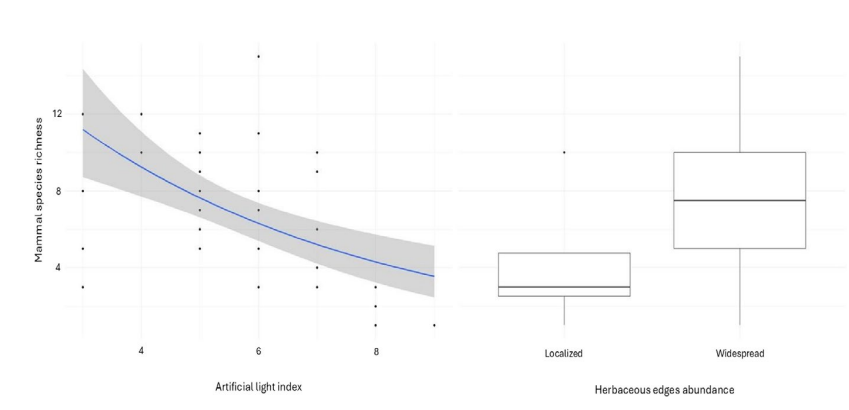Background/Overview: This study was conducted in Italy and aims to understand ways wildlife adapts to urban environments through camera trapping. Italy, like many parts of the world is experiencing rapid urbanization and there is currently a lack of research on the topic. Camera trapping has been shown to be very effective in analyzing animal behavior but has not been used much due to privacy concerns and conflicts with landowners. The study adresses the spatial and temporal changes in wildlife behavior between rural and urban environments. The researchers hypothesized that species will modify behavior to minimize contact with humans, behaviors will change due to changes in vegetation and light pollution levels, predator-prey relationships will change, and spatiotemporal overlaps between species that are well-adapted to urban areas versus species that occasionally use urban areas.
Methods: The study site was located in Firenze, Italy. It was selected due to the amount of artificial surfaces which were mainly mid-rise and low-rise buildings. The researchers placed a grid of 1kmX1km squares and categorized each square by landcover type. These types included cultivated areas, riparian habitats, urban green space, and human settlements. From these categories, 35 locations were chosen as sites for camera traps. The camera traps were in place from March 2023 to May 2024 and they were set to record for 60 seconds for each event. Videos were discarded when species could not be identified. These species were then identified as either urban dwellers or urban visitors. The vegetation cover for each site was also analyzed. The study mentioned that there was a lack of GIS data for the area and much of the data had to be collected directly from the field. The amount of artificial light in each site was determined through the Bortle Index Scale where 1 is no light and 9 contains extreme light pollution. Human presence for each site was determined through the proportion of humans captured through the camera traps. The study addressed privacy concerns through obtaining permits and permission from landowners. There was also a QR code placed at each site with a request form to remove human subject videos and to report vandalism.
Below is a map of the camera trap sites

Results/Discussion: From the camera trap data, there were 7880 recordings with 72 species identified. The majority of the species were humans. The results demonstrated more temporal overlap between predators and prey in urban settings compared to those that were more rural. Humans were found to spatially overlap 100% with all other species recorded. Urban areas contained fewer predators which allowed species such as hares and deer shift from being nocturnal to diurnal. This behavior change was seen in areas that contained urban green spaces. It was also noted that these species were being fed by humans and consuming waste.
Below is a graph of the proportion of species found in camera trap data.

This graph shows the change in species richness across two different variables.

In the discussion, it was determined that wildlife adjust their behaviors to avoid humans while exploiting their resources. It was also found that the increase in light pollution decreased predators’ ability to hunt, thus reducing species richness in urban areas. Suburuban areas were found to contain the highest species richness because these areas included an overlap of urban dweller and urban visitor species. In urban areas, species richness was higher in areas that contained more vegetation and green space. The study came to the conclusion that managing for green space and limiting artificial light disturbances are key in managing urban wildlife. It was then suggested for more studies like these in other cities for a better understanding of urban wildlife.
Reflection/Critique: Overall, I thought this was a very interesting study. I chose this paper because I haven’t read much literature about camera traps and it was also published less than a month ago. I agree with the paper in that there is a need for more camera trap studies in urban areas as they are effective in monitoring wildlife. It would be interesting to see this done locally. My one critique is about the GIS data. I know they said there was a lack of data for the study area but it may have been beneficial in collecting it as a part of their project so they could have something to look back on and so that the study could be replicated easier. I’m sure collecting this type of data is time consuming and they might not have had time to do it. This could be something that could be done in future studies of the same site.
Reference:
Mori, E., Lazzeri, L., Maggioni, M., Viviano, A., Guerri, G., Morabito, M., Martini, S., Dondina, O., Sogliani, D., Scarfò, M., & Ancillotto, L. (2025). Camera‐traps and the city: Spatiotemporal adaptations of wildlife to Urban Environments. Ecological Solutions and Evidence, 6(3). https://doi.org/10.1002/2688-8319.70115